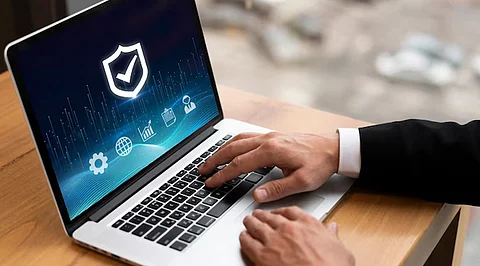

SAP (Systems, Applications, and Products) is one of the most widely used enterprise resource planning (ERP) software solutions. It is used by thousands of businesses worldwide to manage and streamline their operations. However, with the increasing complexity of cyber threats, businesses must take appropriate measures to secure their SAP systems. In this article, we discuss key steps businesses can take to create a comprehensive security framework for their SAP systems.
Conducting a risk assessment is the first step in creating a comprehensive SAP security framework. This will help you identify potential vulnerabilities and threats to your SAP systems. A thorough risk assessment should include a review of your SAP system's architecture, access controls, user roles, and permissions and an analysis of your current security policies and procedures.
Once you have identified potential vulnerabilities and threats to your SAP systems, you can define security roles and access controls. This involves creating a list of users and their corresponding roles and permissions, as well as defining access controls for specific functions and data within the SAP system. It is important to ensure that access controls are defined based on the principle of least privilege, meaning that users are only given access to the minimum amount of data and functions necessary to perform their job duties.
Secure authentication and authorization mechanisms are essential for securing SAP systems. This involves implementing strong passwords, multi-factor authentication, and secure communication protocols. It is also essential to ensure that users are authorized to perform specific functions and that authorization is checked before allowing access to sensitive data.
Monitoring and logging system activity is critical for detecting and responding to security incidents. Businesses should implement logging mechanisms that capture and store all system activity, including user logins, access attempts, and changes to system configurations. This information should be regularly reviewed and analyzed to identify potential security incidents and to address them proactively.
Security updates and patching are essential for maintaining the security of SAP systems. Implement these updates as soon as they become available to address known vulnerabilities and security threats. Regular security updates and patching will help prevent security incidents and reduce the risk of data breaches.
Employees play a crucial role in the security of SAP systems. It is essential to provide regular security awareness training to employees to educate them on potential threats and to promote good security practices. Training should cover topics such as phishing attacks, social engineering, and secure password management.
Engaging external experts is a key step in creating a comprehensive security framework for SAP systems. External experts can provide valuable insights and recommendations for improving the security of your SAP systems. They can also provide regular security assessments to identify potential vulnerabilities and threats, and help you stay up to date on the latest security trends and best practices.
In addition to the information covered above, there are a few more things to consider regarding SAP security. Firstly, staying up to date with the latest security patches and updates released by SAP is important. These updates often contain important security fixes and enhancements that can help protect your system from potential vulnerabilities.
Secondly, it is worth investing in regular security assessments and penetration testing to identify any weaknesses in your SAP environment. This can help you address any issues before attackers can exploit them.
Finally, establish clear security policies and procedures that are regularly reviewed and updated as needed. This includes access controls, password policies, and incident response plans. Having clear guidelines in place can help ensure that your SAP system is consistently and effectively secured.
Overall, SAP security is a critical component of any organization's cybersecurity strategy. By taking a proactive approach and implementing the key steps outlined above, businesses can create a comprehensive security framework that helps protect against potential threats and ensure the ongoing integrity and reliability of their SAP systems.
Securing SAP systems is essential for businesses to protect their valuable data and operations from cyber threats. By following these key steps, businesses can create a comprehensive security framework for their SAP systems. Conducting a risk assessment, defining security roles and access controls, implementing secure authentication and authorization, monitoring and logging system activity, implementing regular security updates and patching, providing regular security awareness training to employees, and engaging external experts are all critical steps in creating a secure SAP system. By taking these steps, businesses can effectively manage risk and maintain the security of their SAP systems.
Join our WhatsApp Channel to get the latest news, exclusives and videos on WhatsApp
_____________
Disclaimer: Analytics Insight does not provide financial advice or guidance. Also note that the cryptocurrencies mentioned/listed on the website could potentially be scams, i.e. designed to induce you to invest financial resources that may be lost forever and not be recoverable once investments are made. You are responsible for conducting your own research (DYOR) before making any investments. Read more here.
